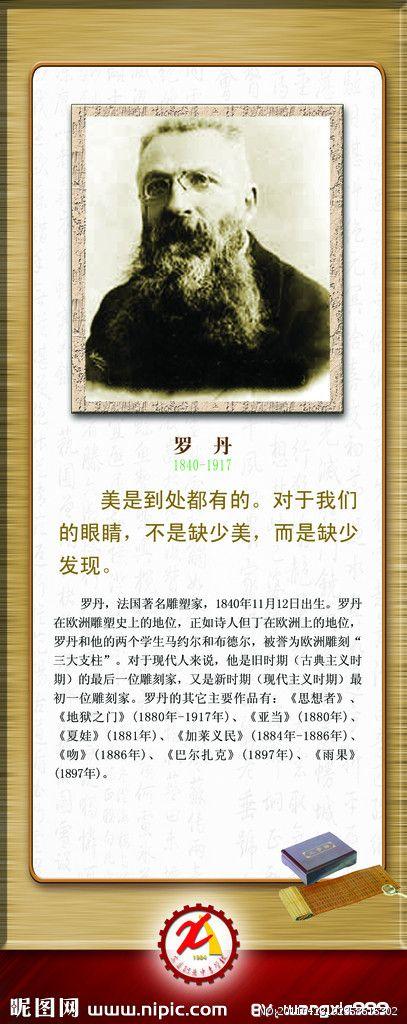
Chem.Mater.2010,22,587–603587
DOI:10.1021/cm901452z
ChallengesforRechargeableLiBatteries
†
JohnB.Goodenough*andYoungsikKim
TexasMaterialsInstitute,UniversityofTexasatAustin,Austin,Texas78712
ReceivedMay27,2009.RevidManuscriptReceivedJuly9,2009
ThechallengesforfurtherdevelopmentofLirechargeablebatteriesforelectricvehiclesare
reviewed.Mostimportantissafety,whichrequiresdevelopmentofanonflammableelectrolytewith
eitheralargerwindowbetweenitslowestunoccupiedmolecularorbital(LUMO)andhighest
occupiedmolecularorbital(HOMO)oraconstituent(oradditive)thatcandeveloprapidlyasolid/
electrolyte-interface(SEI)layertopreventplatingofLionacarbonanodeduringafastchargeofthe
battery.AhighLi
þ-4
-ionconductivity(σ>10S/cm)intheelectrolyteandacrosstheelectrode/
Li
electrolyteinterfaceisneededforapowerbattery.Importantalsoisanincreainthedensityofthe
storedenergy,whichistheproductofthevoltageandcapacityofreversibleLiinrtion/extraction
into/fromtheelectrodes.Itwillbedifficulttodesignabetteranodethancarbon,butcarbonrequires
formationofanSEIlayer,whichinvolvesanirreversiblecapacityloss.Thedesignofacathode
compodofenvironmentallybenign,low-costmaterialsthathasitselectrochemicalpotentialμ
C
well-matchedtotheHOMOoftheelectrolyteandallowsaccesstotwoLiatomspertransition-metal
cationwouldincreatheenergydensity,butitisadauntingchallenge.Tworedoxcouplescanbe
accesdwherethecationredoxcouplesare“pinned”atthetopoftheO2pbands,buttotake
advantageofthispossibility,itmustberealizedinaframeworkstructurethatcanacceptmorethan
oneLiatompertransition-metalcation.Moreover,suchasituationreprentsanintrinsicvoltage
limitofthecathode,andmatchingthislimittotheHOMOoftheelectrolyterequirestheabilityto
tunetheintrinsicvoltagelimit.Finally,thechemicalcompatibilityinthebatterymustallowalong
rvicelife.
Introduction
Itisnowalmostuniversallyrecognizedthatgaous
emissionsfromtheburningoffossilfuelsandbiomassare
notonlypollutingtheairoflarge,moderncitiesbutare
alsocreatingaglobalwarmingwithalarmingcon-
quences.Moreover,adependenceonforeignoiland/or
gascreatesnationalvulnerabilitiesthatendangersocial
stability.Theconcernsareconcentratingattentiononce
againonnationalinitiativestoreevaluateutilizationof
alternativeenergysourcesandreplacementoftheinternal
combustionenginewithawirelesselectricmotor.
Solarradiation,wind,andwavesreprentenergy
sourcesthatarevariableintimeanddiffuinspace.
1
Thesourcesrequireenergystorage.Nuclearreactors
provideaconstantenergysourcewithassociatedpro-
blemsofradioactivewastedisposal.Geothermalenergyis
restrictedinlocation.Theenergysourcesalsobenefit
fromelectricalenergystorage.Theenergycarriersarethe
electricitygrid,electromagneticwaves,andchemicalen-
ergy.Themostconvenientformofenergystorageis
portablechemicalenergy,whichisthereasonforour
addictiontofossilfuelsforheat,propulsion,lighting,and
communication.Thebatteryprovidestheportabilityof
Acceptedaspartofthe2010“MaterialsChemistryofEnergyConversion
SpecialIssue”.
*Authortowhomcorrespondenceshouldbedirected.E-mail:
jgoodenough@.
r
2009AmericanChemicalSociety
†
storedchemicalenergywiththeabilitytodeliverthis
energyaselectricalenergywithahighconversioneffi-
ciencyandnogaousexhaust.Moreover,thealternative
energysourcesarepreferablyconvertedtod.c.electrical
energywell-matchedtostorageaschemicalenergyina
battery.Whereasalternativeenergysourcesarestation-
ary,whichallowsothermeansofenergystoragetobe
competitivewithabattery,electricvehiclesrequirethe
portablestoredenergyofafuelfedtoafuelcellorofa
battery.Therefore,ofparticularinterestisalow-cost,
safe,rechargeable(condary)batteryofhighvoltage,
capacity,andratecapability.
Thehigherstoredvolumeandgravimetricenergy
densityofaLibatteryhasenabledrealizationofthe
cellulartelephoneandlap-topcomputer.However,cost,
safety,storedenergydensity,charge/dischargerates,and
rvicelifeareissuesthatcontinuetoplaguethedevelop-
mentoftheLibatteryforthepotentialmassmarketof
electricvehiclestoalleviatedistributedCO
2
emissions
andnoipollution.
2
Abatteryconsistsofagroupofinterconnectedelectro-
chemicalcells.Here,wefocusonbatteriesforelectric
vehicleswherecost,gravimetricenergydensity,andthe
performanceuniformityofindividualcellsinalarge,
multicellbatteryareofmoreconcernthanthevolume
energydensityconsideredcriticalforhand-heldappli-
ances.Moreover,weconsideronlythechoiceofactive
materialsintheindividualcellsofacondarybattery,
/cmPublishedonWeb08/28/2009
588Chem.Mater.,Vol.22,No.3,2010GoodenoughandKim
viz.theanode(negativeelectrode),thecathode(positive
electrode),andtheelectrolytebetweentheelectrodes.
PreliminaryConsiderations
intheelectrodesandtheelectrolyteofathermodynami-
Figure1isaschematicoftherelativeelectronenergies
callystablebatterycellhavinganaqueouselectrolyte.
Theanodeisthereductant,thecathodeistheoxidant,
andtheenergyparationE
molecularorbital(LUMO)andthehighestoccupied
molecularorbital(HOMO)oftheelectrolyteisthe“win-
g
ofthelowestunoccupied
dow”oftheelectrolyte.Thetwoelectrodesareelectronic
conductorswithanodeandcathodeelectrochemical
potentialsμ
withaμabovetheLUMOwillreducetheelectrolyte
unlessapassivationlayercreatesabarriertoelectron
energiesandμ(theirFermiε).Ananode
ACF
A
transferfromtheanodetotheelectrolyteLUMO;a
cathodewithaμ
electrolyteunlessapassivationlayerblockselectron
C
belowtheHOMOwilloxidizethe
transferfromtheelectrolyteHOMOtothecathode.
Therefore,thermodynamicstabilityrequireslocating
theelectrodeelectrochemicalpotentialsμandμwithin
thewindowoftheelectrolyte,whichconstrainstheopen-
circuitvoltageVofabatterycellto
AC
oc
eV¼μ-μð1Þ
ocg
AC
eE
whereeisthemagnitudeoftheelectroncharge.A
passivatingsolid/electrolyte-interface(SEI)layeratthe
electrode/electrolyteboundarycangiveakineticstability
toalargerVprovidedthateV-Eisnottoolarge.
ococg
circuitwheretheydoufulworkbeforeenteringthe
Ondischarge,electronsleavetheanodeviaanexternal
cathode.Toretainchargeneutralityintheelectrodes,
cationsarereleadfromtheanodetotheelectrolyteand
theworkingcationoftheelectrolyte,theH
aqueouselectrolyte,carriespositivechargetothecathode
toprovidechargeneutralityinthecathode.Theprocessis
reverdonchargeinarechargeable(condary)battery.
þ
ioninan
capacityofreversiblechargetransferperunitweight(Ah/
TheenergydensityofabatterycellisΛV
g)betweentheanodeandcathode.Λdecreaswiththe
oc
;Λisthe
rateofchargeordischarge,i.e.themagnitudeofthe
electroniccurrentintheexternalcircuit,whichmustbe
matchedbytheinternalioniccurrentwithinthebattery.
Sincetheioniccurrentdensityoftheelectrolyteand
electrodes,includingtherateofiontransferacrossthe
electrode/electrolyteinterface,ismuchsmallerthan
theelectroniccurrentdensity,theelectrodesandelectro-
lytehavealargesurfaceareaandasmallthickness.
Nevertheless,athighcurrentdensities,theionicmotion
withinanelectrodeand/oracrossanelectrode/electrolyte
interfaceistooslowforthechargedistributiontoreach
equilibrium,whichiswhythereversiblecapacityde-
creaswithincreasingcurrentdensityinthebattery
andwhythiscapacitylossisrecoveredonreducingthe
rateofchargeand/ordischarge.
electrolyteoverthepracticalambient-temperaturerange
ThehighH
þ
-ionconductivityrequiredofanaqueous
Figure1.Schematicopen-circuitenergydiagramofanaqueouselectro-
lyte.ΦandΦaretheanodeandcathodeworkfunctions.Eisthe
windowoftheelectrolyteforthermodynamicstability.Aμ>LUMO
ACg
and/oraμ
SEIlayer.
HOMOrequiresakineticstabilitybytheformation<ofan
A
C
isonlyfoundinliquidorimmobilized-liquidwater,and
anE
ordertoobtainacellwithahigherVandthereforea
foranaqueouselectrolytelimitsV≈1.3eV.In
goc
higherenergydensityΛV,itisnecessarytoturntoa
nonaqueouselectrolytewithalargerE.Thisobrva-
oc
oc
tion,inturn,hasledtotheLi-ionbatterysincelithium
saltsaresolubleinsomenonaqueousliquidsandpoly-
g
mers.However,inthisca,theHOMOofthesaltaswell
þ
asthatofthesolventmaydeterminethelimitingμofthe
cathode.
C
determined,itisnecessarytodesignelectrodesofhigh
OncethewindowoftheLi-ionelectrolytehasbeen
þ
capacitythathavetheirμ
andHOMOoftheelectrolyte.ElementalLiwouldbethe
idealanode,buttheε=μofLiliesabovetheLUMO
ofpractical,knownnonaqueouselectrolytes.Therefore,
AC
andμmatchedtotheLUMO
0
FA
uofLi
ingSEIlayerisformed.TheSEIlayerallowsuofLias
0
asananodeisonlypossiblebecauapassivat-
0
ananodeinhalf-cellsudtoobtaintheμorμofa
practicalelectroderelativetotheLi
0
AC
onrepeatedcharge/dischargecycles,breakingoftheSEI
þ0
/Lienergylevel;but
layerinlectedareasresultsintheformationofdendrites
thatcangrowacrosstheelectrolytetoshort-circuitacell
ofthebatterywithdangerousconquences.Therefore,
wemustdesigneither(1)ananodewithaμ
theLUMOoftheelectrolyteaswellasacathodewithaμ
matchedtotheHOMOoftheelectrolyteor(2)astable
passivatingSEIlayerthatlf-healsrapidlywhenbroken
A
matchedto
C
bythechangesinelectrodevolumethatoccurinacharge/
dischargecycle;theSEIlayermustalsopermitafastLi
iontransferbetweentheelectrodeandtheelectrolyte
withoutblockingelectrontransferbetweentheactive
þ
-
particleandthecurrentcollector.
operofarechargeableLibatteryforthepotential
Insummary,theformidablechallengesforthedevel-
massmarketofelectricvehiclesarethree-fold:toidentify
ReviewChem.Mater.,Vol.22,No.3,2010589
Table1.NonaqueousElectrolytesforLi-IonBatteries
ElectrolytesExampleofclassicalelectrolytes
Liquidorganic1MLiPF
1MLiPFEC:DMCin(1:1)101.3>5.0
6
inEC:DEC(1:1)71.34.5Flammable
6
Ionicliquids1MLiTFSIinEMI-TFSI2.01.05.3Non-flammable
1MLiBFinEMI-BF8.00.95.3
44
PolymerLiTFSI-P(EO/MEEGE)0.1<0.04.7Flammable
LiClO
482
-PEOþ10wt%TiO0.02<0.05.0
InorganicsolidLiGePS(x=0.75)2.2<0.0>5.0Non-flammable
0.05LiSiOþ0.57LiSþ0.38SiS1.0<0.0>8.0
4-x1-xx4
4422
InorganicliquidLiAlClþSO70-4.4Non-flammable
42
Liquidorganicþ0.04LiPF
Polymer0.14PAN
6
þ0.2ECþ0.62DMCþ4.2-4.4Flammable
LiClOþECþPCþPVdF3.0-5.0
4
Ionicliquidþ1MLiTFSIþPTFSIþ0.18<0.05.8Lessflammable
PolymerPVdF-HFP
13
IonicliquidþPolymer56wt%LiTFSI-Py
þLiquidorganic30wt%PVdF-HFPþ
14wt%EC/PC
24
TFSIþ1.54.2Lessflammable
Polymer2vol%LiClO-TEC-19þ98vol%0.03<0.0>4.5Non-flammable
þInorganicsolid95(0.6Liþ0.4LiSS)þ5LiSiO
4
2244
IonicliquidþLiquidorganic
19
low-cost,environmentallybenignmaterialsforthekineticstabilityisrequiredbecautheelectrode
threeactivecomponentsofabatterycell,viz.(1)a
nonaqueouselectrolyteofhighLi-ionconductivity
(σ>10S/cm)overthepracticalambient-temperature
3-
þ
range-40<T<60°Cthathasawindowallowing8)Lowtoxicityandlowcost.
Li
athermodynamicallystableVMeetingalltherequirementsprovestobea
oc
g4Vand(2)ananode
and(3)acathodewiththeirμandμvalueswell-formidablechallenge.
matchedtothewindowoftheelectrolyteaswellaseach
allowingafastcharge/dischargecycleoflargereversible
AC
capacity.
Electrolytes
electrolytemustsatisfyveraladditionalrequirements
InadditiontoalargeelectrolytewindowE
suchas:
g
,the
1)Retentionoftheelectrode/electrolyteinterface
duringcyclingwhentheelectrodeparticlesare
2)ALi
changingtheirvolume.
þ-4
-ionconductivityσ>10S/cmoverthe
Li
3)Anelectronicconductivityσ<10S/cm.
temperaturerangeofbatteryoperation.
4)Atransferencenumberσ
includesconductivitiesbyotherionsintheelec-
e
-10
Litotaltotal
/σ≈1,whereσ
5)Chemicalstabilityoverambienttemperatureranges
trolyteaswellasσþσ.
Lie
6)Chemicalstabilitywithrespecttotheelectrodes,
andtemperaturesinthebatteryunderhighpower.
includingtheabilitytoformrapidlyapassiva-carbonate,thesolventsinclude,inmostcas,ethylene
tingsolid/electrolyte-interface(SEI)layerwherecarbonate(EC)becautheECprovidesapassivating
Ionicconductivity
(Â10s/cm)
-3
þ0
atroomtempRemark
window(V)vsLi
Electrochemical
/Li
ReductionOxidation
376
373
151515
151616
242424
262626
282828
303030
2020
3838
3939
434343
0.81
444444
464646
---Non-flammable
potentialliesoutsidetheelectrolytewindow.
7)Safematerials,i.e.,preferablynonflammableand
nonexplosiveifshort-circuited.
specificallydesignedforaparticularbatteryapplication.
TypesofElectrolytes.Ingeneral,theelectrolyteis
Table1showsveraldifferentmaterialsthathavebeen
udaselectrolytesforLibatteries.
nicliquidsthatarereasonablygoodsolventsforLi
OrganicLiquidElectrolytes.Carbonatesareorga-
salts.
3,4
ca.4.7Vandareductionpotential(LUMO)near1.0
Theyhaveanoxidationpotential(HOMO)at
3,5,6
V.
7þ0
potential.)Moreover,theyhavearelativelylowviscos-
(AllvoltagesinthispaperarereferredtotheLi/Li
ity,whichresultsinalowactivationenergyforLi-ion
diffusion.Therefore,themostcommonlyudelectro-
þ
lytesarecarbonatesorcarbonateblendsconsistingof
oneormoreofthefollowing:propylenecarbonate(PC),
ethylenecarbonate(EC),diethylcarbonate(DEC),
dimethylcarbonate(DMC),orethylmethylcarbonate
(EMC).Inordertobeabletoucarbonastheanode,
whichhasitselectrochemicalpotentialabove(ata
lowervoltageversusLi
þ0
/Li)thatoftheLUMOofa
590Chem.Mater.,Vol.22,No.3,2010GoodenoughandKim
solid/electrolyte-interface(SEI)layeronthesurfaceofa
carbonanodethatprotectstheelectrolytesfromfurther
decompositionafterSEIformation.However,carbo-chemicalwindowandadditionallymeettheelectrolyte
nate-badsolventsarehighlyflammablewithflashrequirementsfrom2to7,not1.Forthereasons,
pointsbelow30°C.Inaddition,thepreferredsalt,laboratory-sizeall-solid-stateLi-ionbatterieshavebeen
10
8,9
LiPF,canundergoanautocatalyticdecompositionintoHowever,thefirstoftheadditional
LiFandPF;thePFreactsirreversiblywithanywaterelectrolyterequirementshasexcludedinorganicsolid
prent(PFþHO=PFOþ2HF)and,above60°C,Li-ionelectrolytesfromconsiderationforlarge-scale
6
55
withacarbonateelectrolyte.Thereactionsdegradebatterieshavingsolidelectrodes.Theyhaveonlybeen
523
11
thebatteryandleadtosafetyhazards.However,addi-udinthin-filmbatteryapplications.
tivesudtolowertheoperatingtemperaturehavebeenHybridElectrolyteSystem.Hybridelectrolytesare
showntopreventtheautocatalyticdecompositionofblendsoforganicliquidelectrolytes,ionicliquids,poly-
LiPF
12
6
salt.merelectrolytes,and/orinorganicsolidelectrolytes:
(RTILs)havebeenrecentlyconsideredasalternativeIonicliquidþpolymerelectrolyte(ionicliquidpoly-
IonicLiquids.Room-temperatureionicliquidsPolymerþorganicliquid(polymergel)
13-17
electrolytesforLi-ionbatteriesbecautheyofferveralmergel)
advantagesovercarbonate-badelectrolytes:ahighIonicliquidþpolymerelectrolyteþliquidorganic
oxidationpotential(∼5.3VvsLi/Li),nonflammabil-electrolyte
ity,alowvaporpressure,betterthermalstability,low
þ043,44
toxicity,highboilingpoints,andahighLi-saltsolubility.
Unfortunately,theyhaveahigherviscosity,whichre-
ducestheirLi-ionconductivity.Ionicliquidsbadon
imidazolium-badcationswouldappeartobethemost
þ
appropriatecandidatesforLibatteriesduetotheirlower
viscosityandahighLi-saltsolubilityatroomtempera-
ture.However,theionicliquidshavepoorstabilityat
voltagesbelow1.1V,
mustbeaddedtointroduceastableSEIlayeronacarbon
18
sothatadditivessuchasECorVC
anode.Analternativeapproachistoincreaσ
addingaliquidcarbonatetoanionicliquid,butata
concentrationthatretainsthenonflammabilityofthe
Li
by
ionicliquid.
increatheoxidationvoltage(lowerHOMOenergy)of
19
Withthisstrategy,itisalsopossibleto
thehybridelectrolytefromthatofthecarbonate.Inspite
ofextensiverearch,noRTILshaveyetbeenintroduced
intolargepowerbatteries.
electrolytebadonLiAlCl
InorganicLiquidElectrolytes.Theinorganicliquid
nandHambitzer
20,21
andSOpropodbyStas-
42
σÂ10S/cmandisnonflammable,=7butitselectro-
lytewindowappearstobetoosmalltobecompetitive.
-2
hasagoodroom-temperature
Li
astheparatoroftheelectrodes,andasolidpolymer
SolidPolymerElectrolytes.Asolidelectrolytecanact
electrolytecanalsoretaincontactoveranelectrode/
electrolyteinterfaceduringmodestchangesoftheelec-
trodevolumewiththestateofchargeofthebattery.
Polyethyleneoxides(PEOs)containingalithiumsalt
(LiPF
LiAsFor)arelow-cost,nontoxic,Li-ion
2422-þ
polymerelectrolyteswithgoodchemicalstability,butthe
66
Li-ionconductivity,σ<10S/cmatroomtempera-
þ-5
ture,istoolowforapower-batterysystem.Theintroduc-
tionofoxideparticles(e.g.,Al
ZrO)createsamoreamorphouspolymermatrix
Li
2322
O,TiO,SiO,or
byinhibitingchaincrystallizationandattractingLi
25-27
2
þ
fromitssalt.TheresultisanenhancedσandLi-ion
transferencenumber,butσ
Li
thatofthecarbonateelectrolytes.
Li
isstillnotcomparableto
conductingmaterialshavingaσ>10S/cmhave
InorganicSolidElectrolytes.InorganicsolidLi-ion
þ
Li
-428-31
beenconsideredforLi-badelectrolytes,ashasbeen
extensivelyreviewed,
32
becautheyhaveawideelectro-
investigated.
33-35
þ
36
41-45
37-40
Ionicliquidþliquidorganicelectrolyte
19
Polymerelectrolyteþinorganicsolidelectrolyte
46-48
gatedinattemptstoexploittheadvantagesofeach
Themixturesoftwoormoreelectrolytesareinvesti-
constituent,butthedisadvantagesofeachalsoappear.
Forexample,theionicconductivityisincreadinthe
polymergelelectrolytes,buttheyarestillflammableand
havetheirreversiblecapacitylossbelow1Vassociated
withformationofapassivationlayer.
40
modynamicstabilityoftheelectrolytevisavistheelec-
Electrode-ElectrolyteCompatibility.Althoughther-
trodesispossiblewheretheμ
withinthewindowoftheelectrolyte,neverthelesschemi-
calreactionsbetweentheelectrodeandtheelectrolyte
AC
andμoftheelectrodeslie
mayoccur.Forexample,thereversibleelectrochemical
intercalationofLiintoLi
byuoftheelectrolyteLiClOinPC,buttheelectro-
lyteLiPFinEC/DECallowsfullelectrochemicalcycling
betweenLiVSandVS.
x2
VSwasoriginallyfrustrated
4
49
6
typeofelectrode-electrolytereaction;anelectrodesur-
ThecathodespinelLi[Mn]Oprovidesanother
22
50
1-x24
facedisproportionationreaction2Mn=MnþMn
resultsindissolutionoftheMnfromtheelectrodeinto
theelectrolyte.Thisreaction,unlesssuppresd,gives
2þ
3þ2þ4þ
anirreversiblecapacitylossofthecathodeandmigration
51
oftheMnacrosstheelectrolytetotheanodeduring
chargetoblockLi-ioninrtionintotheanode.The
2þ
þ
resultisanintolerablelimitationofthervicelifeof
thecell.
Inadditiontochemicalstabilityvisavistheelectrodes
andhighertemperatures,theelectrolyteshouldnotbe
decompodbyananodeμ
electrolyteLUMOoracathodeμ
theHOMO.However,ifμorμlieoutsidethewindow
oftheelectrolyte,kineticstabilitymaybeachievedby
A
atahigherenergythanthe
atalowerenergythan
C
AC
formationofapassivatingSEIlayeronthesurfaceofthe
electrode,butattheexpenofthelossincapacitytoform
thelayer.Moreover,duringafastcharge,theconcentra-
tionofLi
layer,andwhereachangeinvolumeoftheelectrode
þ
ionsmaybuilduponthesurfaceoftheSEI
ReviewChem.Mater.,Vol.22,No.3,2010591
Figure2.(a)VoltageprofilesversusLi/LiofthedischargecurvesofLiC,LiTiSandLi[Ti]S,LiCoO,andLiCoPO.(b)Schematicoftheir
þ0
x6x2x24x2x4
correspondingenergyvsdensityofstatesshowingtherelativepositionsoftheFermienergyinanitinerantelectronbandforLiC,theTi/Tiredox
x6
4þ3þ
coupleforLiTiSandLi[Ti]S,theCo/CoredoxcoupleforLiCoO,andtheCo/CoredoxcoupleforLiCoPO.
x2x24x2x4
4þ3þ3þ2þ
breakstheSEIlayer,Limaybeplatedoutbeforethe
0
breakishealed.Liplatingcanresultindendritesthat
growacrosstheelectrolyte.Thisproblemcreatesasafety
issuethathashauntedtheuofacarbonanodeinlarge-
scalepowerbatteries.Theproblemsneedtobemana-
gedifsafetystandardsaretobemetwithanyanode,
includingcarbon,thathasitsμ
A
abovetheLUMOofthe
electrolyte.
Acathodeμatalowerenergythantheelectrolyte
C
HOMOmustbedistinguishedfromanintrinsicvoltage
limitofthecathode,asisdiscusdbelow.Aswith
anodes,passivatinglayersoncathodesarebestformed
insitusothatelectroniccontactwiththecathodecurrent
collectorisnotbroken.Preliminarywork
52-54
onpas-
sivatingSEIlayersonoxidecathodeshasfoundthem
tobeunstable.Thisfieldhasyettobeadequately
rearched.
Electrodes
Thedesignofanelectrodeinvolvestailoringoftheμ
A
ofananodeorμofacathodetotheLUMOorHOMO
C
oftheLi-ionelectrolytetobeud;theelectrodemust
þ
alsobechemicallystableintheelectrolyte.Todate,
practicalelectrodeshaveallhadhoststructuresinto/from
whichguestLiatomscanbeinrted/extractedreversibly.
FactorsDeterminingμandμ.Theenergyofagiven
AC
μorμmaycorrespondtotheFermienergyinan
AC
itinerant-electronband,asisthecaforcarbon,orthe
energyofaredoxcoupleofatransition-metalcation.
Tailoringoftheenergyofaredoxcoupledependsnot
onlyontheformalvalencestateofthecation,butalsoon
thecovalentcomponentofitsnearest-neighborbonding,
whichisinfluencedbytheplacementandcharacterofany
countercationsandbytheMadelungenergyoftheionic
componentofthebonding,whichisinfluencedbythe
structure.Inaddition,thepositionofaredoxcouple
relativetothebottomofabroadconductionbandorto
thetopofananionpbandmaydeterminetheintrinsic
voltagelimitversusLi
þ0
/Liofagivenelectrode.This
problemarisforaμwheretheactiveredoxcoupleis
C
“pinned”atthetopoftheanionpbands.Pinningofredox
couplesandtheintrinsicvoltagelimitareconceptsde-
scribedbelow.However,wefirstdemonstrateinFigure2
therangeofvoltagesthatareexhibitedbyhoststructures
592Chem.Mater.,Vol.22,No.3,2010GoodenoughandKim
into/fromwhichLiionshavebeeninrtedreversibly.
Carbon,Li
pounds,the[Ti]SspinelhostofLi[Ti]Sisstrongly
bondedin3D,andLiCoPOshowstheinfluenceofthe
TiS,andLiCoOarealllayeredcom-
þ
x2x2
24x24
countercationofthe(PO)polyanionontheCo/
x4
CocouplerelativetotheCo/Cocoupleinthe
2þ4þ3þ
layeredLiCoO(chargesonionsreprentformal
4
3-3þ
valencestates,notactualcharges).Theuppervoltage
x2
limitsinthesulfidesaremuchlowerthanthointhe
oxides.InFigure3,wealsoshowhowtheMn/Mn
morethan1eVwheretheLi
Licoupleof[Mn]Oinaspinelframeworkisshiftedby
4þ3þ
x22
fromoctahedraltotetrahedralsitesas2>x>1
decreasto1>x>0.Theinfluenceofstructureis
þ
ionschangetheirposition
exemplifiedbythecomparisoninFigure4ofthevol-
tagesfromtheFe
PONASICONstructureofLi),theFe(PO,and
3þ2þ
/FecoupleintheolivineLiFe-
somediphosphates.
x
43þx243
packedhexagonalarraywithTioccupyingalternate(001)
HostStructures.ThesulfuratomsofTiSformaclo-
55
planesofoctahedralsites.TheTiSsheetsofedge-
2
sharedoctahedraareheldtogetherbyvanderWaals
forces.Steeleoriginallysuggestedthatintercalationof
6/3
LiintotheemptyoctahedralsitesbetweentheTiS
sheetswouldbereversible,whichmadeTiSapotential
56
6/3
cathodeforarechargeableLibattery.Whittinghamwas
2
thefirsttodemonstratefast,reversibleLiinrtioninto
TiSthesolid-solutionrange0exe1ofLioverTiS.
57
However,attemptstomakeaTiS/Libatteryfailed
2x2
becaudendriteformationontheLianodecaud
2
0
0
explosivefailure.Nevertheless,theearlyexperiments
demonstratedthatcompoundsintowhichLicanbe
inrted/extractedreversiblyarecandidateelectrodes
fortherechargeableLibattery.
relativetotheLi
Thehorizontal,dashedlinesofFigure5aretheenergies
HOMOoftheEC/DECsolventcontainingthemore
þ0
benignLiPFastheLi-ionsalt.Thisfigureshowsthat
/LipotentialoftheLUMOand
þ
theenergyμ
6
notwell-matchedtotheHOMOofthiselectrolyte.Rea-
Cx2
oftheTi/TiredoxcoupleofLiTiSis
4þ3þ
lizationthatTiSthevoltagelimitversusapproachesLi/
2
þ
Li
0
inrtionintolayeredoxides.However,layeredoxides
ofalayeredsulfidesuggestedexplorationofLi
58
areonlyfoundwhereatransition-metalcationformsan
MdObondaswiththevanadylVdOandmolybdyl
ModOcationsofV
hand,LiMOoxidesforminganorderedrock-saltstruc-
253
OandMoO.Ontheother
59,60
turewithLiandtransition-metalMatomsonalternate
2
(111)octahedral-siteplanesinvitedinvestigationof
reversibleLiextraction.RemovalofLifromordered
LiMOallowsoperatingonanM/Mcoupleoflower
58,61
4þ3þ
energythantheTi
2
removalofLileavesametastablecompound,andM
4þ3þ
/TicoupleofTiS.However,
2
cationsstableintetrahedralsiteseithermoveintothe
partiallyoccupiedLilayerortransformthestructureto
spinelonremovalofhalfoftheLi.Moreover,goodorder
oftheLiandMatomsintheinitialLiMO
Nevertheless,removalofhalfoftheLifromwell-ordered
2
isrequired.
LiCoO
2C
ataμ≈4.0VversusLi/LifortheCo/Co
þ04þ3þ
Figure3.VoltageprofileversusLi/LiofthespinelLiMnO
(2gxg0).TheLiionsareshiftedcooperativelyfromthetetrahedral
totheoctahedralsitesasxincreasthoughx=1.Adaptedfrom
þ
þ0
x24
ref67.
Figure4.PositionsoftheFe/FeredoxcouplesrelativetotheFermi
energyoflithiumindifferentphosphates.Reprintedwithpermissionfrom
3þ2þ
ref55.Copyright1997TheUniversityofTexasatAustin.
coupleprovedstable.Thiscouplehasagoodmatchtothe
HOMOoftheLiPFinEC/DECelectrolyte,butonly
oneLifortwocobaltreprentsareducedcapacity;and
Coistooexpensiveandtoxicforalarge-batterymass
6
market.
intercalationanodetoreplaceLi
Graphitehasalayeredstructurethatemedtoofferan
ugraphitewerefrustratedbyreductionoftheelectro-
0
,butearlyattemptsto
lyteonLiinrtion.AsisshowninFigure5,theμof
carbonlieswellabovetheLUMOofacarbonateelectro-
lyte,whichiswhyidentificationofaLiintercalation
62
A
compoundisnotasufficientconditionforaviable
electrode.Ontheotherhand,incorporationofethylene
carbonate(EC)intothecarbonateelectrolytepromotes
formationofanSEIlayeronthecarbonthatprovidesa
kineticstability.
8
Anirreversiblecapacitylossonthe
ReviewChem.Mater.,Vol.22,No.3,2010593
Figure5.Voltageversuscapacityofveralelectrodematerialsrelativeto
thewindowoftheelectrolyte1MLiPF
6
inEC/DEC(1:1).
initialchargeofthecarbonanodeisassociatedwiththe
formationofathin,amorphousSEIlayeronthe
carbonthatstabilizesreversibleLiinrtion/extraction
onsubquentcharge/dischargecycles,eFigure6,with
areversiblecapacityof370mAh/g.Disorderedcarbon
ratherthangraphiticcarbonprovidesabettercapacity.
WithapassivatedcarbonanodeandLiCoOasthe
cathode,membersoftheSonycorporationlaunchedthe
63
hand-heldwirelessrevolutionwiththeirintroductionof
2
thewirelesstelephone.
64
turesofferstrong3Dbondingaswellasinterstitialspace
Thenextstepwastorecognizethatframeworkstruc-
fortheinrtionofLiions.Forexample,theA[B]X
spinelscontainBcationsinoctahedralsitesandAcations
intetrahedralsitesofaclo-packed-cubicX-atomarray.
þ
24
TheBcationsareorderedtogivea3D-bonded[B]X
frameworkinwhichtheinterstitialspaceisintercon-
nectedbyedge-sharingoctahedralsitesthatsharefaces
24
withthetetrahedralAsites;eFigure7.Murphyand
colleagues
65
rtedLiintothe[Ti]Sspinelframework.Inthissulfide,
removedCufromCu[Ti]Sandthenin-
24
Liionsinitiallyentertheoctahedralsitesoftheinter-
þ
stitialspaceratherthanthetetrahedralsites,sothe
24
voltageversusxprofileofLi
esntiallyidenticaltothatofthelayeredLiTiS.
[Ti]S,0exe1,was
x24
x2
57
IndependentworkatOxfordshowedthatLicanbe
inrtedintotheoxospinels;butinoxidestheLispecies
occupythetetrahedralsitesinLi]O[B.Oninrtion
66
ofLiintoLi[B]O,Coulombinteractionsbetweenthe
LiionsdisplacealltheLiionstotheoctahedralsites.In
þþ
1-x24
24
thespinelLi[Mn]O,thehigh-spinMnionsareJahn-
Tellerions,andcooperativeorbitalorderingforaratio
24
3þ
Mn/Mn>0.5distortsthecubicstructuretotetra-
3þ4þ
gonaltogiveacoexistenceoftwophasratherthana
solidsolutionandthereforeaflatV≈3.0VforLi-
[MnSubquently,Thackerayetal.showedthaton]O.
removaloftheLifromthetetrahedralsitesofLi
oc1þx
67
24
[Mn]O,theVversusxprofilewasat4.0VversusLi/
LiforthesameMn/Mnredoxcouple.Theobrva-
04þ3þ
1-x
-
2
4oc
þ
tions,summarizedinFigure3,showedthatshiftingtheLi
stepintheMn/Mnredoxcoupleasaresultofthe
fromoctahedraltotetrahedralionssitesproducesa1eV
þ
inductiveeffectoftheLiions.However,italsoshows
4þ3þ
þ
Figure6.(a)Voltagecurvesofgraphitetestedin1MLiClOinPCand1
MLiAsFinPC:EC(1:1)electrolytes.TheelectrolyteisreducedatV≈0.7
Vin1MLiClOinPC.AnSEIlayerisformedintheEC-badelectrolyte
between0.8and0.4VversusLi/Li,whichallowsfurtherintercalationof
4
6
4
Li
þ
SchematicprentationoftheformationoftheSEIlayerbydecomposi-
ionsafteraninitialcapacityloss.Adaptedfromrefs62and8.(b)
þ0
tionofEC-badelectrolytes.Adaptedfromref9.
Figure7.TwoquadrantsofthecubicspinelA[B]Xshowing
theoccupiedtetrahedralsites(8a),occupiedoctahedralsites(16d),
andunoccupiedoctahedralsites(16c).TheLispeciesofLi
occupy8atetrahedralsites,andthoofLi[B]Ooccupyonly
24
1-x24
unoccupiedoctahedralsites(16c).TheLispeciesofLi
onlyunoccupiedoctahedralsites(16c)forallxof0exe2.Adapted
[B]O
1þx24
fromref77.
x24
[Ti]Soccupy
thatuoftheoxospinelslimitstheoperativecapacity
tooneLipertwoB-sitecationsasinlayeredLiCoO
AlthoughMnischeaperandenvironmentallymore
2
.
594Chem.Mater.,Vol.22,No.3,2010GoodenoughandKim
benignthanCo,ithasprovennecessarytosubstitutesome)
LiandNiforMntosuppressLiorderatLipolyanionforoxygenopensthehostframework.More-
0.524
[Mn]Oand
dissolutionofMntotheelectrolyteonrepeatedcharge/over,theobrvationofa0.6VincreaintheVfrom
dischargecycling;theresultingfurtherlossofcapacityisLiFe(MoO)toLiFe(SO),eachoperatingon
onlypartiallyregainedbytheabilitytoreplacesometheFe/Fecouple,demonstratedthatsignificanttun-
oxygenwithfluorine.
68,69
Another3DframeworkistheM(XO)structureofthroughtheinductiveeffectbychangingthecounter-
243
hexagonalFe(SO),whichconsistsofclustersoftwocationinthepolyanion.Withthisframework,itwas
243
MOoctahedrabridgedbythreecorner-sharing(XO)
64
tetrahedra;theoctahedraoftheclusterssharecorners
withthetetrahedraofneighboringclusterstocreatean)with(SO).
open3Dhoststructurecapableofacceptingupto5Li
atomsperformulaunitintoitsinterstitialspace;e
Figure8.ThisframeworkisreferredtoastheNASICON
structuresinceNa
1þ3x21-xx43x4
Zr(PSiO)wasshowntoLiforLiFePO,0exe1,asaresultofasmall
700
supportfastNa-ionconduction,i.e.tobeaNA-ion
þ
SuperiorIonicCONductor.Substitutionofan(XO
4
71
oc
3þx2433þx243
3þ2þ
ingoftheenergyofaredoxcouplecanalsobeachieved
possibletodeterminetherelativeenergiesofveralredox
couplesinanoxide,Figure9,andhowtheshifttogether
onreplacing(PO
44
72,73
Thisexplorationledtoidentificationoftheolivine
74
framework,Figure10,ofFePOinwhichinrtionofLi
4
intoits1DchannelsgivesaflatV=3.45VversusLi/
oc
þ
Figure8.NASICONframeworkofLiM(XO)thatisbuiltwithMO
x2436
octahedralinkedbycornerstoXOtetrahedraandviceversa.AdaptedFigure10.OlivinestructureofLiFePOshowingLiin1Dchannels.
44
fromref70.Adaptedfromref74.
Figure9.(a)PositionsoftheFe/FeredoxcouplesrelativetotheFermienergyoflithiumintheNASICONstructurewithdifferentpolyanion
3þ2þ
countercations.Adaptedfromref55.(b)PositionsofsomeM/MredoxcouplesinLiM(PO).Adaptedfromref73.
nnþ1
x243
ReviewChem.Mater.,Vol.22,No.3,2010595
displacivestructuralchangeoftheframeworkbetweenorbitalsretainadorbitalsymmetryandbehaveas
LiFePOaredoxcouple.However,asthepercentageofanion
44
andFePO.Despitethetwo-phacharacterfor
0<x<1,whichresultsinapoorelectronicconductivity,pcharacterincreasastheredoxcouplefallsfurther
andthe1DchannelsfortheLimotion,smallparticlesofbelowthetopoftheanionpbandsorwithincreasing
carbon-coatedC-LiFePOresultinsafecathodeswithoxidationbeyondacriticalvalue,theantibondingchar-
x4
reversiblecapacitiesthatdonotfadesignificantlyon
cyclingthousandsoftimes.However,theVisnot
oc
optimalfortheLiPFintheEC/DECelectrolyte.Never-
6
theless,acellvoltageV≈3Vcanbeobtainedwith)or(O).
oc22
LiFePOasacathodeandacarbonanode,whichisTheCo/CoandNi/Niredoxcouplesinthe
4
excellentformanyapplications.However,toensurelayeredoxidesLiCoOandLiNiOarepinnedat
safetyforlarge-scalepowerapplications,itwouldbethetopoftheO2pbands.ThesystemLi
preferabletohaveananodewithaμ
Aoc
≈1.3VversusflatV≈4.0VversusLi/Lifor0<xe0.5becau
Li/LiifLiPFinEC/DECisudastheelectrolyte.thereisacoexistenceofapolaronic,high-spinCoina
þ04þ
6
SuchananodewithaLiFePOcathodewould,however,low-xphaandanitinerant-electron,low-spinCo/
4
onlygiveacellV≈2V,whichmightnotbecompetitiveCophanearx=0.5.Forx>0.5,peroxideforma-
oc
withanickel/metal-hydridebatteryhavinganaqueoustionatthesurfaceleadstoalossofObythesurface
electrolyte.reaction
Johnston
75
hadshownthatthespinelLi[Ti]Oisa
24
superconductorandthesystemLi[LiTi]O,0exe
x2-x4
1/3,hadbeenwell-characterized,buttheidentifica-
76,77
tionofLi[LiTi]Oasapotentialanodewitha
1þx0.331.674
flatV=1.5VversusLi/LiwasfirstmadebyFerget
oc
þ0
al.AlthoughLiTiOreprentsathermodynamically
78
4512
stableanodehavingnopassivationlayer,ithasonlya
modestcapacityanditsuasananoderequiresidenti-
ficationofacathodewithabettermatchtotheHOMO
oftheelectrolytethanLiFePO.
4
IntrinsicVoltageLimits.Pinningofaredoxcoupleat
thetopofananionpbandprovidesanintrinsicvoltage
limitforacathode.Pinningoccurswhere,asisillustrated
79
inFigure11,theenergyofaredoxcouplecrossthetopof
theanionpbands.Atthiscrossover,theelectronicstates
ofadredoxcouplechangefromprimarilycationd,i.e.
n
(dþp),toprimarilyanionp,i.e.(pþd)character,and
nn
wherethecouplehasaprimarilyanionpcharacter,the
cationwillappeartobeinalowervalencestate,dafter
nþ1
oxidationofthecouple.Nevertheless,theantibonding
(pþd)
n
acterofthestatesatthetopoftheanionpbandsfadesand
holesoccupybondinganionpstates;forlargerconcentra-
tionsofpurelyanionpholes,theholesbecometrappedin
dianionantibondingstates,e.g.(S
2-2-
4þ3þ4þ3þ
1-x21-x2
1-x2
CoOshowsa
þ0
804þ
3þ
2
2ðOÞ¼2OþO
22
2-
2-
vð2Þ
AV≈4.0VistheintrinsicuppervoltagelimitforLi-
oc1-x
CoO
2
.Decompositionofthecompoundoccursathigher
voltages.
Thelow-spinCoCo:π*σ*redoxcoupleof
x1-x
4þ3þ
6-x0
Li
1-x2
CoOcontainsholesintheantibonding,itinerantπ*
orbitalsoftorbitalparentage;thelow-spinNiNi:
x1-x
4þ3þ
tσ*coupleofLiNiOcontainselectronsinthe
61-x
1-x2
antibondingσ*orbitalsofeorbitalparentage,andfor
x>0.6inLi
1-x2
NiO,holesbecometrappedinperoxide
ions.Theinitialvoltagewiththeσ*orbitalsisalittlelower,
atV≈3.8VinlayeredLiNiO,whichiswhyagreater
1-x2
concentrationofNivalenceisfoundbeforeOevolution
4þ
2
thanwithCoinLiCoO.Itisthecubicligand-field
4þ
1-x2
splittingoftheoctahedral-site3dorbitalsthatraisthe
Ni
4þ3þ4þ3þ
/Nicoupleabovethatofthelow-spinCo/Co
couple.SubstitutionofhalfoftheNibyMninLi-
(NiMn)OgivestheformalvalencestatesNiand
0.50.52
2þ
Mn.TheMn/Mncouplelieswell-belowthetopof
4þ5þ4þ
Figure11.Schematicreprentationofaslightlyoxidizedredoxcouplefordifferentpositionsrelativetothetopoftheanionpbands.(a)Itinerantversus
polaroniccharacterofholestatesofacoupleontheapproachtothetopoftheanionpband,(b)pinnedcouplewithpredominantlyantibonding(a.b.)anion
pholestatesandpredominantlycationdbonding(b.)states,and(c)coupletoofarbelowtopofanionpbandforsignificantcationdcharacterinholestates.
Reprintedwithpermissionfromref79.Copyright2009Elvier.
596Chem.Mater.,Vol.22,No.3,2010GoodenoughandKim
Figure12.(a)VoltageprofileforthedischargeandchargecurvesonLiintercalationintoLiTiS,LiVS,andLiCrStestedinthe1MLiPFinEC:
0.820.8226
DEC(1:1)electrolyte.(b)Correspondingpositionsofthebottomofthe4sband,thetopoftheS3pband,theM
3þ2þ4þ3þ
/M,andtheM/Mredoxcouples
relativetotheFermienergyoflithium.Adaptedfromref82.
theO2pbands,buttheNi/NicoupleispinnedattheþLiSat0.85V.Thecrystal-field
3þ2þ0
topoftheO2pbands.InLi(NiMn)O,theholessplittingofthe3dorbitalsliftstheσ-bondingeorbitals
1-x0.50.52
occupyaσ*bandofeofhigh-spinCr
2-2x62-2x2þ31
parentageattheNi:tσ*,so:teabovethebottomofthe4sband
thereisnostepintheFermienergyEonpassingfromtheinLiCrSeventhoughCrShasbeenobtainedchemically
F2
Ni/NitotheNi/Nicouple.Moreover,theMn-NibyJellinek.SinceoverlapoftheS3porbitalswith
3þ2þ4þ3þ83
interactionraistheNitheCr4sislargerthanwiththeCr3dorbitals,the
4þ3þ
/Niredoxcouplerelativetothe
topoftheO2pbandstogiveaccesstotheentireNi/NicovalentcomponentoftheCr-Sbondliftsthebottom
4þ3þ
couple.Nevertheless,σ*orbitalsof(eþp)parentageofthe4sbandofCrSabovetheenergyofthe3d
2-2x4
changeto(pþe)
2-2x2þ
parentageasxincreas.configurationtoallowaccesstotheCrvalencestate.
ThelimitinglowervoltageofananodeoccurswhereaInLiCrS,thesulfuratomsbondtoCrononeside
redoxcouplecrossthebottomofthebroadcationandtoLiontheother.Moreover,theLispeciesare
conductionband;e.g.the4sbandforthefirst-rowforcedintotetrahedralsitesinLiCrS,andfailureto
transition-metalatoms.Thissituationisillustratedby
LiinrtionintothelayeredLiMS
2
sheetstocreateaofthetetrahedral-siteLi-Sbondisreducingthecova-
coexistenceofLiMSandLiMSphasandthereforealentcomponentintheCr-Sbondtoleavethebottom
222
flatVversusxprofile.ThebottomoftheM4sbandofoftheCr4sbandbelowthe3d
themonosulfidesMSlowersprogressivelyastheMatomtionillustrateshowthebondingofacountercationcan,
nuclearchargeincreasfromM=TitoM=Ni.Inthroughtheinductiveeffect,changetheintrinsiclimit-
81
LiTiSinglowervoltageassociatedwithatransition-metal
22
andLiVS,thebottomofthe4sbandisatca.0.15
eVbelowtheLi/LiFermienergy;itisonlyalittlelower
þ0
at0.85eVinLiCrS.AsisevidentinFigure12,anSEI
2
82
layerwasformedrapidlyonLiMS(M=Ti,V)in
0.8þx2
thevoltagerange0.5<V<0.9VversusLi
þ0
/Lionthe
firstdischarge;theTi/TiandV/Vcouplesgave,
3þ2þ3þ2þ
respectively,aV≈0.5and1.0VversusLi/Li.
þ0
However,inrtionofLiintoLiCrSyielded,inaddition
2
totheSEIlayer,Cr
2
1þx2
22
accessCrimpliesthatastrongcovalentcomponent
2þ
4
energy.Thisobrva-
cation.
EffectofCationSubstitutions.Acountercationcan,
throughtheinductiveeffect,notonlychangeanintrin-
siclimitingvoltageassociatedwithatransition-metal
cationbutalsobeudtotunetheenergyofanoperative
redoxcouple.Thistuningphenomenonisillustratedin
Figure5bycomparisonofthevoltagesassociatedwith
ReviewChem.Mater.,Vol.22,No.3,2010597
Figure13.VoltageprofilesofLi[NiMnTi]O:(a)y=0,(b)y=0.3,(c)y=0.5,and(d)y=1.Thecapacitydecreasandthevoltageincreas
1-x0.51.5-yy4
withhigherTicontent.Adaptedfromref84.
theTi/TicouplesintheNASICONframeworkof
4þ3þ
LiTi(PO)andthespinelLiTiO.Achangefrom/NicoupleofLiNiO
1þx24345122
2.5to1.5Vshowsthatthecountercationcanhavea
profoundeffectonaredoxenergythroughtheinductiveof4.8VversusLi/LiforextractionofLifromthe
effect.Moreover,comparisonoftheNi/NiredoxtetrahedralsitesofthespinelifthetopoftheO2pband
4þ3þ
energyinlayeredLiNiOandthepinnedNi
2
whereincompleteaccessis/Nicouplearebothstabilizedby
foundat3.8VwiththatinthespinelLi[NiMn]OtheshiftoftheLiionsfromoctahedraltotetrahedral
1-x0.51.54
wherecompleteaccessisfoundat4.75V,eFigure13a,sites.AlthoughtheprenceoftheMnionsraisthe
showsthatcovalentbondingwiththecountercationcanNi/NiredoxenergyrelativetothetopoftheO2p
alsoincreatheintrinsiclimitingvoltageofacathodeby
loweringthetopoftheO2pbands.Wenowinquireabout
theeffectofcationsubstitutionfortheactivecationonaccesd.Inthespinel,thelimitationistheHOMOof
theintrinsiclimitingvoltagewheretheparent-cationtheelectrolyte;itisnottheintrinsicvoltagelimitofthe
redoxenergyispinnedatthetopofananionpband.cathode.
Forthispurpo,wecomparetheinfluenceofMn
4þ
versusTisubstitutionsontheenergiesoftheNi/
4þ3þ
NiandNi/Nicouplesinlayeredandspineloxides.
2þ4þ3þ
ComparisonwiththeinfluenceofCrsubstitutionsfor
3þ
vanadiuminthelayeredLiVCrSsulfidesisalsoin-
1-yy2
structive.
RemovalofLifromthetetrahedralsitesofthespinel
Li[NiMn]OinitiallyprobestheNi/Niand
1-x0.51.54
3þ2þ
thentheNi
4þ3þ
/Niredoxcouplespinnedatthetopofthe
O2pbands.Figure13ashowsthatthevoltageincreas
graduallywithxfromabout4.74to4.77Vinthefirst
chargecurve.Theirreversiblecapacitylossinthefirst
cyclecorrespondstotheformationofanSEIlayerbythe
oxidationoftheelectrolyte.Theirreversiblecapacityloss
oneachcycleisnotcharacteristicofformationofastable
SEIlayer;itreprentsoxidationoftheelectrolyteandan
unstableSEIlayer.SincetheNi
4þ3þ
givesaninitialvoltageof3.8V,wemayexpectavoltage
þ0
4þ3þ
þ
4þ
4þ3þ
bands,thevoltageexceedstheHOMOoftheelectrolyte
atabout4.75VbeforethefullNi/Nicoupleis
4þ3þ
Figures13b-dshowwhathappenstothevoltage
profileasMnisreplacedbyTiinLi[NiMnTi]O.
0.51.5-yy4
84
Theoctahedral-siteMn/Mncoupleappearstobe
5þ4þ
cloenoughtothetopoftheO2pbandstobenearly
pinned;theMnionisstableintetrahedralsiteswith
5þ
abasiccountercation.InteractionbetweentheMn/
5þ
MnandNi/Nipinnedcouplesallowsaccessto
4þ4þ3þ
antibondingstatesatthetopoftheO2pbandscorre-
spondingtoaformalNi
4þ3þ
/Nicouple.Missingthis
interaction,theNi/NiandNi/Niredoxcouples
4þ3þ3þ2þ
fallbelowthetopoftheO2pband.Asaresult,thevoltage
increaswithincreasingTicontentinLi[Ni
0.51.5-y
Mn-
Ti]O.However,theirreversiblecapacitylossisbigger
y4
withincreasingTicontentandathigherTicontent(yg
1.0)inrtionofLidoesnotpermitaccesstoeventhe
598Chem.Mater.,Vol.22,No.3,2010GoodenoughandKim
Ni/Niredoxcouple;thereappearsalargeirrever-SinceonlyoneLicanberemovedfromalayeredoxide
3þ2þ
siblecurveat4.9Vaty=1.0.Thisisduetothefactthat
thetwonickelredoxcouplesfallfurtherbelowthetop
oftheO2pbandswithincreasingTicontentinLi[Ni-
0.5
MnTi]O.Hence,theirreversibleflatcurveat4.9V
1.5-yy4
correspondstotheirreversibleaccesstothetopoftheO2p
bands,whichindicatestheintrinsicvoltagelimitofthespinel
oxides.However,thiscanbeconfudwiththeoxidation
potentialoftheelectrolytes;itisestimatedaround4.75V.
Figure14comparesthevoltageprofilesofthelayered
oxidesLi(NiMn)OandLi(NiTi)O.
1-x0.50.520.9-x0.450.552
85
86
Intheexamples,thevoltagesarewellbelowthe4.75V
oftheHOMOoftheelectrolyte.TheMnraisthe
4þ
energiesofthetwonickelcouplesrelativetothetopof
theO2pbands,sotheNi
4þ
valencestateisaccesd
reversibly.Ontheotherhand,theTiapparentlylowers
4þ
theNi/NicouplerelativetothetopoftheO2pbands
3þ2þ
sufficientlytolimittheintrinsicvoltageofthelayered
oxidetounder4.0V.EventheNi
3þ2þ
/Nicoupleisnot
completelyaccesdintheprenceofTi.
4þ
Figure15comparesthevoltageprofilesoflayered
oxidesinitiallycontainingNi
2þ4þ
intheprenceofMn
withlayeredsulfidesinitiallycontainingVinthepre-
3þ
nceofCr.Intheoxides,theNi/NiandNi/Ni
3þ3þ2þ4þ3þ
couplesarepinnedatthetopoftheO2pbands;inthe
sulfides,theV/VandV/Vcouplesarepinnedat
4þ3þ5þ4þ
thetopoftheS3pbands.Pinningoftheredoxcouplesof
nickelgivesaninitialV≈3.7VforLi(NiMn)O,
1-x0.50.52
whichissimilartothe3.8VfoundfortheNi/Ni
614þ3þ
coupleofLiNiO.Thereisnostepinthevoltage
1-x2
profileatx=0.5wheretheFermienergyfallsfromthe
Ni
3þ2þ4þ3þ
/NitotheNi/Nicouple.Thislackofastepisa
resultofthepinningofthecouplesandtheitinerant
characteroftheholes.Itistobecontrastedwiththesteps
found,forexample,intheNASICONstructure,asis
87
illustratedinFigure16.Finally,asalreadynoted,the
NivalencestateisaccesdwithouttheevolutionofO
4þ
2
becauoftheprenceofMn.Similarly,Li-
4þ
1-x
(V
0.5
Cr)Sshowsareversiblecharge/dischargeprofile
0.52
thatvariessmoothlythroughx=0.5becautheV/
4þ
VandV/Vcouplesarebothpinnedatthetopofthe
3þ5þ4þ
S3pbands.
79
andthenickelredoxcouplesarebothaccessibleinthe
prenceofMn
4þ
,itwaslogicaltoinvestigatetheoxides
Li(NiMnLi)Othataremoreeasily
0.25-y0.75-zyþz2
88,89
preparedwiththeLiwell-orderedintotheLilayers.Lu
andDahnextractedLifromnominalLi(Ni-
88
1-x0.25
Li
0.1670.5832
Mn)Otoobtainthevoltageprofileofthe
condpanelofFigure15;wecompareitwiththatfor
Li
1-x0.250.752
(VCr)S.Atx=0.5,theNivalenceis
4þ
reachedintheoxide,theV
5þ
valenceisreachedinthe
sulfide.Ineach,thevoltageprofileisflatfor0.5<x<1
wheretheFermienergyfallsbelowthepinnedredox
coupleofantibondingstatesatthetopoftheanionp
bands;eFigure17.AflatV=4.5VplacestheFermi
energyabovetheHOMOoftheelectrolyte,whichwe
estimatedtobeatV≈4.75V.Thisobrvationmeans
thattheflatvoltageprofilesignalsthevoltagelimithas
beenreached,i.e.anE
F
intheO2pband,ratherthanan
oxidationoftheelectrolyte.Thissituationmustsurelybe
thecainthesulfide.Attheintrinsicvoltagelimit,a
condphaappearsintheelectrode.Oncethecond
phahasbeengregatedintheoxideontheinitial
charge,theelectrodecycleswithareducedcapacityin
themajoritypha.Inthesulfide,formationofthe
condphaappearstobemorereversibleasifinitially
disulfideionsarecreatedonthesurfacebeforegrega-
tionofLi
223
SþCrS.Similarly,someperoxideionsmay
formreversiblyontheoxidebeforegregationofLi
2
O
andMnO.
2
ThethirdpanelofFigure15showsthatonfurther
decreaoftheNiconcentrationandincreaoftheMn
concentrationinnominalLi
1-x0.170.220.612
(NiLiMn)O,
theontoftheflatV=4.5isintroducedatasmallerx
withasubquentreversiblecapacitysimilartothatof
Li(NiLiMn)OwhereasLi(VCr)S
1-x0.250.1670.58321-x0.10.92
exhibitsaninitialcapacityfadethatbecomesreversible
withareducedcapacityafterveralcycles.Theob-
rvationsareconsistentwiththecoexistenceoftwo
phasintheelectrodewherethevoltagebecomesflat
withareversiblecyclingoncethecondphaisgre-
gatedout.
ReviewChem.Mater.,Vol.22,No.3,2010599
Indeed,Thackerayetal.havearguedthattheattempt
90
tointroduceexcessLihomogeneouslyintothetransition-
metallayersdoesnotoccur;butacoexistenceofLi-
2
MnO
30.330.672
=Li(LiMn)Olayersisinterleavedwithelectrode-electrolytereactiononcyclingthickensthe
Li(NiMn)OlayerswiththetransformationSEIlayer,andprogressivefadingofthereversiblecapa-
0.5-y0.5þy2
Li
2322
MnO¼LiOþMnOð3Þ
occurringatV=4.5V.ontoftheoxidationreactionhasgivenareported
CathodeSEILayers.Extensiverearchhasbeende-HOMOoftheelectrolyteLiPFinEC/DEClocatedat
votedtocharacterizationoftheSEIlayerformedon4.5(0.2eVversusLi/Li.Thisambiguitymaybe
lithiumandoncarbonanodesbyreductionoftheelec-enhancedbyadependenceoftheoxidationvoltageon
trolyteLiPF
6
inEC/DEC;thisamorphousLi-electro-theSEIproduct,whichcanvaryfromoneelectrode
8,63
lytelayeriscomplex,andtherateatwhichitishealedmaterialtoanother.However,confusionbetweenthe
afteritisbrokenbychangesintheelectrodevolumeonintrinsicvoltagelimitofanelectrodeandtheHOMO
chargeanddischargeisdifficulttomeasureaccurately.voltagemayalsocontributetothisambiguity.
PreliminaryworkontheSEIlayersformedonoxide
52,53
cathodesbyanoxidativereactionoftheelectrodewiththe
carbonateelectrolyteindicatesthattheSEIlayersare
generallyunstable;theelectrolyteisnotprotectedfrom
furtheroxidationonsubquentcycling.Acontinued
cityofthecathodeisrelatedtothethickeningoftheSEI
layer.Moreover,ambiguityinthemeasurementofthe
6
þ0
AttemptstocreateastableSEIpassivationlayeronan
oxidecathodehaveudtwoapproaches:oneeksto
600Chem.Mater.,Vol.22,No.3,2010GoodenoughandKim
identifyanadditivetotheelectrolytesuchastheEC
91
componentforthecarbonanode;theotherattemptstowouldprovideaV>4.8VversusLi
coatthecathodeparticleswithamain-groupoxidethatislyteLiPFinEC/DEC.
permeabletoLiions.TheformerapproachformstheCapacity.Theenergydensityofthecellofarecharge-
þ92
SEIlayerinsituaftertheelectrodeparticleshavemadeablebatteryistheproductofthevoltageVandthe
contactwiththecarbonoftheparticle/carboncompositecapacityΛofreversiblechargetransferperunitweight
electrode,sotheSEIlayerformeddoesnotinterferewith
electroniccontactbetweenparticlesandthecurrentcol-
lector.Thecondapproachhasobtainedsomeimprove-paratelyversusLi
mentincyclability,butcompletecoverageoftheactive
particleswithapassivationlayerbeforefabricatingthe
particle/carboncompositeelectrodewouldemtoin-
hibitelectroniccontactwiththecurrentcollector.Howto
coatthecathode/electrolyteinterfacewithastableSEI
layerwhileretainingelectroniccontactwiththecurrentmetaloxideorsulfidehostmaybealayeredcompoundor
Figure16.VoltagestepsintheNASICONstructureofLiFeV(PO).
343
PlateauAofthefirstdischargecorrespondstotheFe/Feredox
3þ2þ
coupleat2.8V;plateauBtotheV
3þ2þ
/Vredoxcoupleat1.7V;plateauC
intheconddischargetotheV
4þ3þ
/Vredoxcoupleat3.7V.Adapted
fromref87.
collectorisacontinuingchallengeforcathodesthat
þ0
/Liintheelectro-
6
inamphourspergrambetweentheanodeandthe
cathode.Thecapacityofeachelectrodemaybemeasured
þ00
/Liinahalf-callwithLiasthe
anode.Threetypesofreversibleelectrodereactionshave
beenconsidered:(1)Liinrtionintoatransition-metal
oxideorsulfidehost,(2)Liinrtionintoelements,and
(3)Lidisplacementreactions.
Transition-MetalOxideorSulfideHosts.Atransition-
aframeworkstructurewith1D,2D,or3Dinterconnected
interstitialspacefortheguestLiatoms.Severalexamples
havebeendiscusdabove.Thevoltagegivenbythehost
electrodewasentobetheenergyoftheoperative
transition-metalredoxcouple.Aflatvoltageprofile
versusLiconcentrationispreferred;itisfoundwhere
twophascoexistratherthanwherethereisasolid
solutionbetweenthechargedanddischargedhost.With
thisstrategy,thecapacityisgenerallyrestrictedtono
morethanoneLipertransition-metalatom;butwhere
theredoxcoupleofatransition-metalatomispinnedat
thetopofananionpband,tworedoxcouplesperthat
transition-metalionmaybeaccesd.Thissituationwas
illustratedbytheNiinLi
1-x0.50.52
(NiMn)OandbyVin
Li(VCr)S.However,astheexamplesillustrate,
1-x0.50.52
itisnotpossibletotakeadvantageofthisaccessibility
unlessthehostcanaccommodatemorethanoneLiper
transition-metalatomwithoutavoltagestep.Framework
structureswithalargeinterstitialspaceareneededto
obtainacapacityofmorethanoneLipertransition-metal
Figure17.(a)PositionsoftheM/MredoxcouplesrelativetotheFermienergyoflithiumin(a)Li(VCr)Sand(b)Li(NiLiMn)O;
nþ1n
0.50.250.7520.50.250.170.682
2.8eVinthelayeredsulfideand4.5eVinthelayeredoxidecorrespondtotheflatcurvesintheirvoltageprofilesinFigure15.
ReviewChem.Mater.,Vol.22,No.3,2010601
Figure18.(a)Structuralunitsand(b)projectioninthea-bplaneforAgTi(PS).(c)DischargeandchargecurvesforAgTi(PS)overfivecyclesat(a)
243243
1.5-3.5Vat0.1mA/cm
2
.Reprintedwithpermissionfromrefs93(Copyright2008AmericanChemicalSociety)and94(Copyright2008Elvier).
atom,butsuchframeworkstendtobeunstableifthelargeponentandVCadditiveofaDECorDMCelectrolyte
cationsthattheyformaroundarereplacedbysmallercreatesapassivatingSEIlayeroncarbonthatishealed
Liions.Ontheotherhand,theNASICONM(XO)quicklywhencrackedbythevolumeexpansionofthe
þ
243
frameworkiscapableofreceivingreversiblyupto5LicarbonmassonLiinrtion.Nevertheless,therateofLi-
atomsandtheMiontransferacrosstheSEIlayerand/ortherateofhealing
243243
(PS)frameworkofAgTi(PS)illus-
tratedinFigure18hasbeenshowntoaccommodateoftheSEIlayerlimitsthesaferateofrechargingofa
93,94
upto10Liatoms;but,reductionofthePSgroupsaswellcarbonanode.Safetyconcernsassociatedwithplatingof
4
astheTitoTidestabilizestheframework.Moreover,Lionthesurfaceoftheanodeandsubquentdendrite
4þ0
thehostmustbestableintheelectrolyte;LiV(PS)
243
dissolvesintheelectrolyteLiPFinEC/DEC.
6
ElementHosts.Anyelementashostintendedforuas
ananodegivesavoltagelessthanthevoltageofthe
LUMOofacarbonateelectrolyte.Therefore,apassivat-
ingSEIlayermustprotectsuchananodeagainstchemical
reactionwiththeelectrolyte.Themostsuccessfulelemen-
talhostiscarbon.Graphitehasalayeredstructurewith
threestrongbondsinthegraphiteplanesandhalf-filledp
z
orbitalsperpendiculartotheplanesthatcaninteractwithtionofanSEIlayerthatdoesnotprotectagainstinter-
theLi2sorbitals.Thisbondingarrangementlimitstheactionwiththeelectrolyte.Similarproblemsareencoun-
volumeexpansiononLiinrtion,butalsothenumberof
Liatomsthatcanbeaccommodated.AlthoughgraphiteDisplacementReactions.Displacementofanelement
canonlyacceptoneLipersixCatoms,thecapacityisstillfromacompoundoranalloycanbereversible,
large,thevolumeexpansionismanageable,anditsvol-
tagechangeslittlewiththeLicontent.Thesituationis
similarwithdisorderedcarbon.Moreover,theECcom-
þ
formationrequireadesignoflarge-scalepowerbatteries
usingcarbonanodesthatprotectsagainstfailureofan
individualcell.
MoreLicanbeinrtedintoSithanintoC,which
makesitpotentiallyananodeofexceptionallyhigh
capacity,butavolumeexpansionofover300%onfull
chargeisnotmanageable.Althoughthefabrication
ofnanowireshasbeentoutedasasolutiontothis
problem,
95,96
thisanodesuffersfromcontinuingforma-
teredwithLireplacementsforHinmetalhydrides.
97,98
aswas
firstdemonstratedwiththedisplacementofironfrom
FeOoninrtionofmorethanoneLiperformula
34
unit.
99
Exploitationofthisphenomenonpromidalarge
602Chem.Mater.,Vol.22,No.3,2010GoodenoughandKim
capacitysinceadisplacementmayinvolvereducing
thedisplacedatombymorethanoneelectron.
Thereactionsareofparticularinterestforanodeswith
main-groupatoms;theyoffervoltageslessthanthe
100,101
voltageoftheLUMOofacarbonateelectrolyte.How-abovetheLUMOoftheelectrolyte,
ever,thisstrategysuffersfromlargevolumechangesina
charge/dischargecycleandtheneedforastablepassivat-
inglayerthatcanhealmorequicklythanreactionwiththe
bulkelectrolyteortheexcessLiaccessiblewithoutexceedingtheintrinsicvoltagelimitof
approachisonlypromisingiftheLUMOoftheelectro-
lytecanberaidabovetheμoftheanode.Nevertheless,
þ
ionsatthesurface.This
amorphousSiordisplacementreactionsthatarebuffered
withgraphitecanimprovethecapacityofacarbonanode.
A
Summary
batteriesforelectricvehiclesarecost,safety,cellenergy
Theprincipalchallengesfacingthedevelopmentof
density(voltageÂcapacity),rateofcharge/discharge,
andrvicelife.Automationofmanufacturing,material
lection,andrvicelifearethekeystolowercosts;the
availabilityofLineednotbeaproblem.Longrvicelife
requireseliminationofunwantedchemicalreactions
betweentheelectrodesandtheelectrolyteaswellas
retentionovermanycharge/dischargecyclesoftheelec-
troniccontactbetweentheactiveparticlesofanelectrode
andthecurrentcollector.Thelatterrequirementrestricts
thevolumechangeversusstateofchargethatcanbe
toleratedinanelectrodeunlesstheactiveelectrodepar-
ticlesaretetheredtoacurrentcollector.Thisattachment
maybemadedirectlybythegrowthofnanowiresofactive
materialonacurrent-collectorsubstrate;itmayalsobe
donebybondingtheactiveparticlestoaconductive
polymerhavingaconductionbandthatoverlapstheμ
orμoftheelectrode.Theformerrateisbeingrearched
withSinanowires,thelatterhasbeenaccomplishedwith
A
C
polypyrrolebondedtocarbon-coatedLiFePO
95
therateofchargeand/ordischarge,andtheengineering
ofthebatterypack.Ahybridionicliquidandorganic
isrelatedtotheflammabilityoftheelectrolyte,Safety
4
.
102,103
liquidastheelectrolytesolventcanbemadenonflam-
mablewithouttoogreatacompromioftheelectrolyte
σ.BoththeLiFePOcathodeandtheLiTiOanode
havedemonstratedsafeandrapidchargeanddischarge
Li44512
overmanycycleswheretheμandμ,respectively,are
locatedwithinthewindowoftheelectrolyte,which
CA
removestherequirementofapassivatinglayer.However,
locationoftheμμandwithintheelectrolytewindowis
notsufficientiftheelectrodeisoperatingatitsvoltage
limitwitharedoxcouplepinnedtothetopofananionp
CA
bandoroverlappingacation4sband.Anelectrolytewith
alargerwindow,especiallyonewithahigherLUMO,
wouldbehelpful;butECand/orVCintheelectrolyte
solventdoallowuofacarbonanodewithalimited
chargingrate.Finally,engineeringthebattery-pack
designtoallowfailureofonecellwithoutcompromising
theentirestackcanalsobuildinsafety.
andlargercapacity.Toachieveagreaterenergydensity
Agreaterenergydensityrequiresbothalargervoltage
withinexpensiveelectrodeshavingalongrvicelifeisa
challengeforthematerialsscientist.Ontheanodeside,it
willbedifficulttohaveabettercapacitythanthatof
carbon,andthepassivationlayermakesitpossibletotake
advantageofaμ
albeitattheexpenofareducedchargingrate.Onthe
cathodeside,amaterialhavingaredoxcouplepinnedat
A
thetopoftheO2pband,butwithtwovalencestates
theoxide,wouldofferthemaximumvoltageandcapa-
city.Theupperintrinsicvoltagelimitofsuchanoxide
canberaidbyincreasingthecovalentcomponentof
theM-Obondofacountercationtolowertheenergy
E
mustnotalsopushthepinnedredoxcouplefurtherthan
VV
ofthetopoftheO2pbands;butthistuningofE
thechangeinE.Comparisonoftheuppervoltagelimits
ofthenickeloxideshavingLiinoctahedralversus
tetrahedralsitesillustratesatuningofEby1.0V.
V
However,totakeadvantageoftheavailabilityoftwo
redoxcouplesonasingletransition-metalatom,itis
V
necessarytohaveahoststructurethatcanaccepttwoLi
atomspertransition-metalcation.Cannatureand/or
theimaginationofthesolidstatechemistidentifysuch
anelectrodematerialwithaμ
lytewindow?Anexampleoftheimaginativematerials
C
matchedtotheelectro-
designthatmaybeneededisgivenbyarecentreport
fromSunetal.
104
ofFreedomCARandVehicleTechnologiesoftheU.S.
Acknowledgment.Thisworkwassupportedbytheoffice
DepartmentofEnergyundercontractno.DE-AC03-
76SF00098andtheRobertA.WelchFoundationofHouston,
TX(GrantNo.F-1066).
References
(1)/.Accesdon05/25/2009.
(2).Accesdon05/25/2009.
(3)Hayashi,K.;Nemoto,Y.;Tobishima,S.;Yamaki,J.Electrochim.
(4)Xu,K.Chem.Rev.2004,104,4303.
Acta1999,44,2337.
(5)Imhof,R.;Novak,P.J.Electrochem.Soc.1999,146,1702.
(6)Egashira,M.;Takahashi,H.;Okada,S.;Yamaki,J.J.PowerSources
(7)Zhang,X.;Kostecki,R.;Richardson,T.J.;Pugh,J.K.;Ross,P.N.
2001,92,267.
(8)Fong,R.;vanSacken,U.;Dahn,J.R.J.Electrochem.Soc.1990,137,
J.Electrochem.Soc.2001,148,A1341.
(10)Vogdanis,L.;Martens,B.;Uchtmann,H.;Henl,F.;Heitz,W.
(9)Yazami,R.Electrochim.Acta1999,45,87.
2009.
(11)Sloop,S.E.;Pugh,J.K.;Wang,S.;Kerr,J.B.;Kinoshita,K.
Makromolekul.Chem.1990,191,465.
(12)Smart,M.C.;Smith,K.A.;Bugga,R.V.;Whitcanack,L.D.In
Electrochem.Solid-StateLett.2001,4,A42.
ElectrolytesforWideOperatingTemperatureRangeLi-IonCells.4th
AnnualInternationalConference:LithiumMobilePower2008,LasVegas,
(13)Koch,V.R.;Dominey,L.A.;Nanjundiah,C.;Onderchen,M.J.
NV,December8-9,2008.
(14)Webber,A.;Blomgren,G.E.InAdvancesinLi-IonBatteries;van
J.Electrochem.Soc.1996,143,798.
Schalkwijk,W.,Scrosati,B.,Eds.;KluwerAcademic/PlenumPublishers:
(15)Garcia,B.;Lavallee,S.;Perron,G.;Michot,C.;Armand,M.Electro-
NewYork,2002;Chapter6.
(16)Markevich,E.;Baranchugov,V.;Aurbach,D.Electrochem.Commun.
chim.Acta2004,49,4583.
(17)Wang,Y.;Zaghib,K.;Guerfi,A.;Bazito,F.F.C.;Torresi,R.M.;
2006,8,1331.
(18)Fuller,J.;Carlin,R.T.;Osteryoung,R.A.J.Electrochem.Soc.1997,
Dahn,J.R.Electrochim.Acta2007,52,6346.
(19)Zaghib,K.personalcommunication.
144,3881.
(20)Stasn,I.;Hambitzer,G.J.PowerSources2002,105,145.
ReviewChem.Mater.,Vol.22,No.3,2010603
(21)Zinck,L.;Borck,M.;Ripp,C.;Hambitzer,G.J.Appl.Electrochem.
(22)Wright,P.V.Brit.Polym.J.1975,7,319.
2006,36,1291.
(23)Armand,M.B.;Chagbano,J.M.;Duclot,M.J.InFastIonTransport
inSolid;Vashishta,P.,Mundy,J.N.,Shenoy,G.K.,Eds.;ElvierN
(24)Nishimoto,A.;Watanabe,M.;Ikeda,Y.;Kojiya,S.Electrochim.Acta
Holland:NewYork,1979;p131.
(25)Croce,F.;Appetecchi,G.B.;Persi,L.;Scrosati,B.Nature1998,394,456.
1998,43,1177.
(26)Croce,F.;Curini,R.;Martinelli,A.;Persi,L.;Ronci,F.;Scrosati,B.
(27)Croce,F.;Settimi,L.;Scrosati,B.Electrochem.Commun.2006,8,364.
J.Phys.Chem.B1999,103,10632.
(28)Pradel,A.;Ribes,M.Mater.Chem.Phys.1989,23,121.
(29)Adachi,G.;Imanaka,N.;Aono,H.Adv.Mater.1996,8,127.
(30)Minami,T.;Hayashi,A.;Tatsumisago,M.SolidStateIonics2006,
(31)Kim,Y.;Saienga,J.;Martin,S.W.J.Phys.Chem.B2006,110,16318.
177,2715.
(32)Dudney,N.J.InLithiumBatteries;Nazri,G.A.,Pistoia,G.,Eds.;
(33)Takada,K.;Aotani,N.;Kondo,S.J.PowerSources1993,43,135.
KluwerAcademicPublishers:Norwell,MA,2004;p623.
(34)Machida,N.;Maeda,H.;Peng,H.;Shigematsu,T.J.Electrochem.
(35)Nagata,K.;Nanno,T.J.PowerSources2007,174,832.1984,54,127.
Soc.2002,149,A688.Harrison,M.R.;Orchard,A.F.;Scott,E.G.J.SolidStateChem.
(36)Bates,J.B.;Dudney,N.J.;Neudecker,B.;Ueda,A.;Evans,C.K.(77)Harrison,M.R.;Edwards,P.P.;Goodenough,J.B.J.SolidState
(37)Feuillade,G.;Perche,Ph.J.Appl.Electrochem.1975,5,63.(78)Ferg,E.;Gummow,R.J.;deKock,A.;Thackeray,M.M.J.Electro-
SolidStateIonics2000,135,33.Chem.1984,54,426.
(38)Appetecchi,G.B.;Croce,F.;Marassi,R.;Persi,L.;Romagnoli,P.;chem.Soc.1994,141,L147.
(39)Persi,L.;Croce,F.;Scrosati,B.Electrochem.Commun.2002,4,92.
Scrosati,B.Electrochim.Acta1999,45,23.
(40)Scrosati,B.InAdvancesinLi-IonBatteries;vanSchalkwijk,W.,
Scrosati,B.,Eds.;KluwerAcademic/PlenumPublishers:NewYork,
(41)Fuller,J.;Breda,A.C.;Carlin,R.T.J.Electrochem.Soc.1997,144,
2002;Chapter8.
(42)Shin,J.-H.;Henderson,W.A.;Pasrini,S.Electrochem.Commun.
L67.
(43)Ye,H.;Huang,J.;Xu,J.J.;Khalfan,A.;Greenbaum,S.G.
2003,5,1016.
(44)Sirisopanaporn,C.;Fernicola,A.;Scrosati,B.J.PowerSources2009,
J.Electrochem.Soc.2007,154,A1048.
(45)Guerfi,A.;Dontigny,M.;Kobayashi,Y.;Vijh,A.;Zaghib,K.J.Solid
186,490.
(46)Cho,J.;Liu,M.Electrochim.Acta1997,42,1481.
StateElectr.2009,13,1003.
(47)Hayashi,A.;Kitade,T.;Ikeda,Y.;Kohjiya,S.;Matsuda,A.;Tatsumi-
(48)Inda,Y.;Katoh,T.;Baba,M.J.PowerSources2007,174,741.
sago,M.;Minami,T.Chem.Lett.2001,814.
(49)Murphy,D.W.;Carides,J.N.;DiSalvo,F.J.;Cros,C.;Waszczak,
(50)Kim,Y.;Goodenough,J.B.Electrochem.Solid-StateLett.2009,12,A73.
J.V.Mater.Res.Bull.1977,12,825.
(51)Blyr,A.;Sigala,C.;Amatucci,G.;Guyomard,D.;Chabre,Y.;Tarascon,
(52)Aurbach,D.J.PowerSources2000,89,206.
T.M.J.Electrochem.Soc.1998,145,194.
(53)Edstrom,K.;Gustafsson,T.;Thomas,J.O.Electrohim.Acta2004,50,
(54)Wang,Z.;Sun,Y.;Chen,L.;Huang,X.J.Electrochem.Soc.
397.
(55)Padhi,A.K.Ph.D.MappingRedoxEnergiesofElectrodeMaterials
A914.
2004,151,
(56)Steele,B.C.H.InFastIonTransportinSolids;vanGool,W.,Ed.;North-
forLithiumBatteries.Thesis,TheUniversityofTexasatAustin,1997.
(57)Wittingham,M.S.Science1976,192,1126.
Holland:Amsterdam,1973.
(58)Mitzushima,K.;Jones,P.C.;Wiman,P.J.;Goodenough,J.B.
(59)Wittingham,M.S.InFastIonTransportinSolids;vanGool,W.,Ed;
Mater.Res.Bull.1980,15,783.
(60)Dampier,F.W.J.Electrochem.Soc.1974,121,656.
North-Holland:Amsterdam,1973.
(61)Goodenough,J.B.;Mizushima,K.;Takeda,T.Jpn.J.Appl.Phys.
(62)Dey,A.N.;Sullivan,B.P.J.Electrochem.Soc.1970,117,222.
1980,19-3,305.
(63)Aurbach,D,InAdvancesinLi-IonBatteries;vanSchalkwijk,W.,
Scrosati,B.,Eds.;KluwerAcademic/PlenumPublishers:NewYork,
(64)Nagaura,T.;Tozawa,K.Prog.BatteriesSolarCells1990,9,209.
2002;Chapter1.
(65)Sinha,S.;Murphy,D.W.SolidStateIonics1986,20,81.
(66)Thackeray,M.M.;David,W.I.F.;Bruce,P.G.;Goodenough,J.B.
(67)Thackeray,M.M.;Jahnson,P.J.;DePicciotto,L.A.;Bruce,P.G.;
Mater.Res.Bull.1983,18,461.
(68)Amatucci,G.G.;Pereira,N;Zheng,T.;Tarascon,J.-M.J.Electro-
Goodenough,J.B.Mater.Res.Bull.1984,19,435.
(69)Choi,W.;Manthiram,A.J.Electrochem.Soc.2007,154,A792.
chem.Soc.2001,148,A171.
(70)Goodenough,J.B.;Hong,H.Y.-P.;Kafalas,J.A.Mater.Res.Bull.
(71)Manthiram,A.;Goodenough,J.B.J.SolidStateChem.1987,71,
1976,11,203.
(72)Goodenough,J.B.Electrochem.Soc.Proc.2000,99-24,1.
349.
(73)Goodenough,J.B.InAdvancesinLi-IonBatteries;vanSchalkwijk,W.,
Scrosati,B.,Eds.;KluwerAcademic/PlenumPublishers:NewYork,2002;
(74)Padhi,A.K.;Nanjundaswamy,K.S.;Goodenough,J.B.J.Electro-
Chapter4.
(75)Johnston,D.C.;Prakash,H.;Zacharian,W.H.;Viswanathan,R.
chem.Soc.1997,144,1188.
(76)Edwards,P.P.;Egdell,R.G.;Fragala,I.;Goodenough,J.B.;
Mater.Res.Bull.1973,8,777.
(79)Goodenough,J.B.;Kim,Y.J.SolidStateChem.,inpress.
(80)Hert,J.T.;Huang,Q;McQueen,T.;Klimczuk,T.;Bos,J.W.G.;
(81)Kim,Y.;Goodenough,J.B.J.Phys.Chem.C2008,112,15060.
Viciu,L.;Cava,R.J.Phys.Rev.B2008,77,075119.
(82)Kim,Y.;Park,K.S.;Song,S.H.;Han,J.T.;Goodenough,J.B.
(83)Jellinek,F.ActaCrystallogr.1957,10,620.
J.Electrochem.Soc.2009,156,A703.
(84)Kim,J.-H.;Myung,S.-T.;Yoon,C.S.;Oh,I.-H.;Sun,Y.-K.
(85)Schougaard,S.B.;Breger,J.;Jiang,M.;Grey,C.P.;Goodenough,J.
J.Electrochem.Soc.2004,151,A1911.
(86)Kang,K.;Carlier,D.;Reed,J.;Arroyo,E.M.;Ceder,G.;Croguennec,
B.Adv.Mater.2006,18,905.
(87)Nanjundaswamy,K.S.;Padhi,A.K.;Goodenough,J.B.;Okada,S.;
L.;Delmas,C.Chem.Mater.2003,15,4503.
(88)Lu,Z.;Dahn,J.R.J.Electrochem.Soc.2002,149,A815.
Ohtsuka,H.;Arai,H.;Yamaki,J.SolidStateIonics1996,92
(89)Park,Y.J.;Hong,Y.S.;Wu,X.W.;Ryu,K.S.;Chang,S.H.J.Power
,1.
(90)Thackeray,M.M.;Kang,S.H.;Johnson,C.S.;Vaughey,J.T.;
Sources2004,129,288.
(91)Abe,K.;Ushigoe,Y.;Yoshitake,H.;Yoshio,M.J.PowerSources
Benedek,R.;Hackney,S.A.J.Mater.Chem.2007,17,3112.
(92)Liu,J.;Manthiram,A.Chem.Mater.2009,21,1695.
2006,153,328.
(93)Kim,Y.;Arumugam,N.;Goodenough,J.B.Chem.Mater.2008,20,
(94)Kim,Y.;Goodenough,J.B.Electrochem.Commun.2008,10,497.
470.
(95)Chan,C.K.;Peng,H.;Liu,G.;Mcllwrath,K.;Zhang,X.F.;Huggins,
(96)Kim,H.;Cho,J.NanoLett.2008,8,3688.
R.;Cui,Y.Nat.Nanotechnol.2008,3,31.
(97)Arico,A.S.;Bruce,P.;Scrosati,B.;Tarascon,J.-M.;Schalkwijk,W.
(98)Bruce,P.G.;Scrosati,B.;Tarascon,J.-M.Angew.Chem.,Int.Ed.
V.Nat.Mater.2005,4,366.
(99)Thackeray,M.M.;David,W.I.F.;Goodenough,J.B.Mater.Res.
2008,47,2930.
(100)Thackeray,M.M.;Vaughey,J.T.;Johnson,C.S.;Kropf,A.J.;
Bull.1982,17,785.
Tostmann,H.;Benedek,R.;Sarankonsri,T.;Hackney,S.A.Proc.-
(101)Thackeray,M.M.;Vaughey,J.T.;Fransson,L.M.L.JOM2002,
Electrochem.Soc.2001,2000-36,92.
(102)Park,K.S.;Schougaard,S.B.;Goodenough,J.B.Adv.Mater.2007,
54,20.
(103)Huang,Y.H.;Park,K.S.;Goodenough,J.B.J.Electrochem.Soc.
19
,848.
(104)Sun,Y.-K.;Myung,S.-T.;Park,B.-C.;Prakash,J.;Belharouak,I.;
2006,153,A2282.
Amine,K.Nat.Mater.2009,8,320.

本文发布于:2023-11-05 17:09:08,感谢您对本站的认可!
本文链接:https://www.wtabcd.cn/zhishi/a/1699175349207215.html
版权声明:本站内容均来自互联网,仅供演示用,请勿用于商业和其他非法用途。如果侵犯了您的权益请与我们联系,我们将在24小时内删除。
本文word下载地址:Challenges for Rechargeable Li Batteries.doc
本文 PDF 下载地址:Challenges for Rechargeable Li Batteries.pdf
| 留言与评论(共有 0 条评论) |